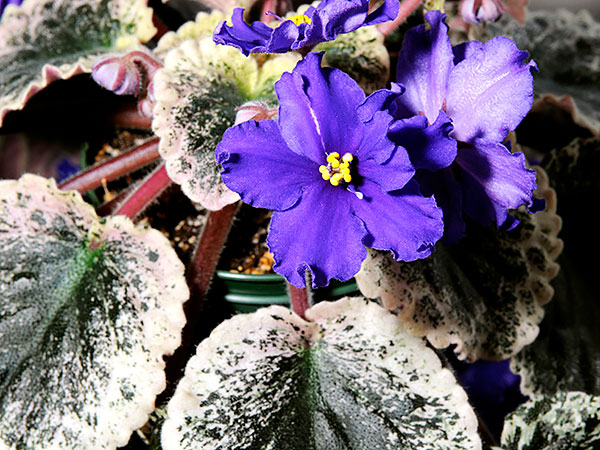
Most houseplants require less water and much less, if any, fertilizer, because they slow their growth during this semidormant winter period. Succulent plants, such as cacti and jade plants, are in a winter dormancy and require bright light but very cool conditions with no water for up to two months. Overwatering will create soft brown patches on stems and foliage.
Monitor houseplants for insect problems that often occur when plants become stressed due to insufficient light; overheated, stuffy rooms; or improper watering and fertilizing techniques. New houseplants or gift plants can also harbor pests. Isolate these plants before adding them to your collection. Pests to look out for include the following:
Spider mites — Look for webbing in leaf axils, stippled foliage, and weak, off-color leaves. Mites are often difficult to see without a lens.
Scale — Characteristic sticky, clear honeydew is produced on leaves by these small, immobile, rounded insects usually found on stems and veins of leaves.
Mealybugs — Easy to spot, these insects resemble crowds of tiny cotton puffs.
Whitefly — Whiteflies are a major problem in many greenhouses because they can quickly move to neighboring plants. Look for tiny, white, mothlike insects often found on the undersides of leaves.
Fungus gnats — The adult black gnats fly around the plant but do no damage. The immature larvae in the moist soil can chew plant roots. They are often a problem in overwatered plants or overly moist flats of seedlings.
Herbs growing on windowsills, as well as smaller houseplants, can benefit from spending a few months under artificial lights to supplement the diminished natural sunlight. Homeowners can construct a light table using two 40-watt fluorescent lights, one cool and one warm, for each foot of shelf space filled with plants. Try to group plants with similar heights together so the light fixture can be set as close to the plants as possible — a few inches above the plants is best. Keep the lights on for 14 to 16 hours a day.
Start seeds for early spring annuals requiring a long lead time before being set out in the garden. Follow directions on individual packets as to which types of seeds require bottom heat, light or darkness in order to germinate. Some seeds might require a short period of chilling before being sown. Cool-season annuals (larkspur, snapdragon, English daisy, ranunculus, monkey flower, pansy, annual poppy, forget-me-not, edging lobelia) can be planted outside in the garden by the second week in April after the small plants are hardened off. This may require starting seeds 14 weeks ahead in order to have blooming plants ready for outside planting.
Sow seeds in fiber pots or trays, using a premoistened, soilless or seed-starting mix. Sow large seeds in slightly indented rows and cover lightly with a thin layer of the mix. Finer seeds may be broadcast directly on top of soil. Some types of seeds will require a glass or plastic cover to provide supplemental humidity. Water seeds from the bottom or use a fine mister to keep the soil moist. Most seeds require a warm, bright location out of direct sun to germinate. Ventilate covered seeds daily, especially in bright conditions.
When germination occurs, gradually increase light levels. When two sets of true leaves develop, transplant small seedlings to a larger fiber pot that contains a slightly coarser, "growing-on" mix. Continue to water from the bottom to encourage strong root development. Begin fertilizing with quarter-strength 10-10-10 solution. As the plant grows larger, switch to a half-strength solution once a week.
Harden plants off approximately seven to 10 days before setting them out. Take them outside for a few hours a day and back in again at night. Gradually increase the time spent outside until they are ready to be planted in containers, window boxes, or garden beds.

